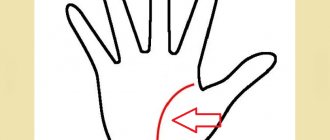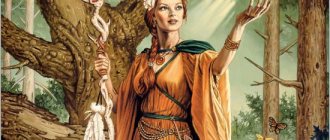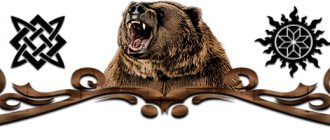Moraine (Mara, Marena, Morzhana, Morana) - Slavic Goddess of Winter and Death. Many terrible words “pestilence”, “darkness”, “darkness” and even “death” are consonant with the name Morena. The goddess Morena was feared, but respected. Especially in the North, where the power of the long winter is strong, they remembered the importance of appealing to the Goddess Morena.
We find mentions of the name Morena in the texts of northern conspiracies. Persuasions addressed to the Goddess of Death are most often read for a good deed, for example, healing from illnesses. It is believed that it is the Goddess of Winter who is able to drive away diseases that come with the cold. And in the texts of ancient letters there are even appeals to the Goddess Morena to secure a promise. Then they write that Morena will be a witness to the one who undertook to fulfill the vow:
Greetings from Peter to Demsha. Give Mikula Kishka six hryvnias, taking from Marena. Bring it yourself, give it in the presence of Marena. And if Yarko asks, then don’t give it to him. Greetings. Do yourself a favor and do it yourself.
Mara is the goddess of death and severe cold among the Slavs
The Slavic goddess Mara (Morena, the giver of death) belongs to the first generation of gods. According to one version, she is the sister of Lada and Lelya (Zhiva) and was created from sparks formed from the blow of Svarogov’s hammer on the sacred stone Alatyr.
All 3 had equal power and complemented each other, controlling different aspects of existence.
According to the second version, Mara is the daughter of Kashchei, who ruled the dark kingdom. Despite the lack of certainty about her origin, one thing remains unchanged - the goddess of death is beautiful. Her beauty is cold and pure.
According to legends that have survived to this day, Mara is the patroness of witchcraft and magic. She appears at the end of life at a time destined by fate and takes you to her kingdom.
Also, the Slavic goddess helps babies move from the world of Navi to the world of Yavi. Together with Truth it is an image of fair justice.
In Slavic mythology there is a mention that the goddess of death collected the souls of those who fell on the battlefield.
In different sources (from different peoples) Mara is described as the Goddess of Death. Some sources associate it with evil and hopelessness. The part speaks of the great destiny “without death there will be no new life.” It is also undeniable that Mara is above the concepts of good and evil and performs the work inherited from creation, which was determined by Svarog.
In Slavic mythology, Mara had many children, each of whom had his own sphere of influence: hunger, devastation, pestilence (mork), disease, death.
Morena in the pantheon of Slavic Gods
Goddess Morena is the daughter of Svarog, Heavenly Father and Lada the Mother of God. Her sisters are the cheerful Lelya, the Goddess of Spring, and the kind Zhiva, the Goddess of Summer. How did it happen that Morena, born among the light Gods, became the ruler of the Navi world?
Northern tales say that the three daughters of Svarog and Lada were kidnapped by the Skipper-Snake, the messenger of Chaos. Lyolya, Zhiva and Morena were turned into terrible monsters and served the Skipper-Snake until he was defeated. Then the Gods Perun, Veles, Stribog and Khors freed the sisters, disenchanted them and returned them to their former appearance. However, the heart of the Goddess Morena remained dark, and she left for Nav.
Now the Goddess Morena is considered the wife of Chernobog, the Ruler of Navi. Sometimes the daughters of Morena are called the Lichomaniac sisters, spirits who send diseases. Therefore, in conspiracies, it is Morena who is asked to calm down their daughters and stop the illness.
Find out more about Goddess Morena:
Book "Gods and Men".
Image of Morana
The description and image of Mary have their own characteristics. The Slavic goddess of death is beautiful. She was depicted as a young girl with white skin in elegant snow-white robes with bright black long hair flowing freely over her shoulders - this is the image of a young goddess at the beginning of winter.
The goddess Mara warns a person about the future through dreams, but not everyone can see the essence in them.
The image in the form of an old woman in worn-out clothes and with a scythe on her shoulder also corresponds to Mara, but symbolizes the end of winter.
Features of the name
The name of the deity - Madder - can have different forms. This is due to the abundance of cognate words that directly affect the name.
In addition to the main one, there are also the following:
- Mara;
- Marana;
- Morana;
- Moraine.
Also in the legends of the Slavs you can find many other names for her: Ice Goddess, Dark Goddess, Kashcheevna, Mistress of Death, etc.
The reason for this variety is the large number of responsibilities that are assigned to her.
Morena's Power
The goddess of death is subject to the movement of time, not only within one individual, but also on a global scale. She can take life from both mortal and immortal beings, and she also has the power to grant a new life.
Before death, people often receive warning of its approach. This aspect is highlighted in the legends of the Slavs. Meeting your double or a woman with long black hair was considered a sign of an imminent end. By sending such signs, the goddess of death gave time to prepare for the transition to the afterlife.
Goddess Mara rules over all three worlds (Reveal, Rule and Navi). She has the power to both take life and give it. The goddess of death can also grant immortality.
Mara spins the thread of fate from living entities, at the end she cuts it with a sickle, which means death.
In addition to power over life expectancy, Morena possessed colossal magical power and often practiced it both in the world of Reveal and Navi together with her friend Yaga.
One of the manifestations of her power is dreams, through which people receive warnings and advice. Another question is that not everyone knows how to correctly interpret what they see.
Mythology
Mara (art)
Slavic legends do not give characteristics of Mara. Despite the change in appearance, she did not demonstrate any commitment to the dark or light side of existence. The Slavs feared the goddess because they considered her a threat to life. She took life and gave it again. Mara had magical powers. She was in control of time. The death and life of people and gods were in her hands. To please Mara, people wore a talisman, embroidering it on clothes or cutting it out of scrap materials. The goddess had the ability to change the world, but not on a permanent basis.
Mara loves to weave. She plays with the threads, as with people's lives, cutting them and watching the direction of their fall. Gods like Morena are not commonly worshiped. If they wanted to offer a prayer to her, they built an idol on the ground, covering it with stones. After the ceremony, everything that was used was burned or drowned.
Mara in Skyrim
Mara has ghost servants - maars. At night they wandered through people's houses and whispered their names. Anyone who responded to the cry had to die. Some beliefs say that maars live behind the stove and bring trouble into the house. In fairy tales and epics, Mara acts as the wife of Koshchei the Immortal and creates obstacles for good heroes and heroes.
Attributes of Mara
All attributes are interconnected with the concept of death:
- black Moon;
- the raven, in addition to being a harbinger of trouble, is closely associated with the magical world;
- a sickle with the help of which she ends the earthly existence of a creature, cutting the thread of fate;
- black Swan;
- griffin.
The attributes of the goddess of death are also: goat, juniper, pine and spruce.
Mara Morana is the goddess of death in the real world, and she was also revered as the guardian of eternal youth in the afterlife.
Symbolism
Madder is the majestic mistress of winter, death and the other world. The Slavs associate her image with dark power, but do not perceive her as absolute evil.
This goddess embodies the universal principle of the universe, necessary for overall balance and development.
Sphere of influence
According to Slavic mythology, Morena brings winter and puts everything to sleep until the beginning of spring. In this way, she allows nature to rest and regenerate. For people and other living beings, it is a guide to the world of death. At the appointed hour, she cuts the threads of life and accompanies the dead to the other side of the Kalinov Bridge.
In addition, the image symbolizes justice and retribution. The sickle in the goddess's hand signifies the harvest, which is associated with fertility and good harvests, as well as with the eternal cycles of rebirth.
Her influence on people’s consciousness is great: Morana made her remember the transience of time and the inevitability of death, not allowing her to waste the allotted time.
Features of the name
There are several interpretations of the name of this goddess: Morana, Mara, Marena, Marana, Marzhana, Mary, Maara. The famous sorceress Morgana is also associated with Morena.
It is easy to notice the consonance with the words “pestilence”, “morok”, “fool”, as well as the connection with such concepts as “death” and “darkness”.
Appearance
Depending on the time of year, Madder is described in two forms. Starting in autumn, she is a beautiful girl with pale skin, long hair and night-colored eyes. She is dressed in a snow-white or azure dress. At the end of winter, the goddess takes on the appearance of a decrepit old woman in black clothes.
Place of residence
Morena lives in the realm of the otherworldly. In the culture of the ancient Slavs it is called “navi”. From the end of autumn to the beginning of spring, the goddess rules in our world, which is called “reality”.
Capabilities
In addition to the above, Morena is associated with diseases and their healing. She was often approached with requests for recovery, especially from seasonal winter diseases. Also, this goddess is able to stop (freeze) any process. When the negative situation gained momentum and troubles fell like an avalanche, Morana was asked to stop it. Sometimes promises and deals were sealed with her name.
Patronage
In the culture of the ancient Slavs, Morena was considered the patroness of witchcraft and healing. She helped curious people get answers from the Navi world. The Goddess favors the brave and purposeful - she helps in achieving success, and also helps to heal from excessive pride.
Amulet of Mary and the meaning of her symbols
Mara's zigzag (waves) is the main symbol of the goddess of death.
Mara maintains balance in the world together with Chernobog. Despite the fatality of its purpose for everyone living today, it cannot be called evil.
The main symbol is waves, symbolizing cold water. The symbol symbolizes a “bridge” between the worlds: the present and the afterlife, which makes the amulet in demand for people involved in the field of magic.
The amulet has great power, but it is not suitable for people who are not ready to come into contact with the kingdom of the dead.
Symbol of the Goddess Mara
Another symbol of the goddess is the Mara-Viy sign, depicted in the form of 2 triangles with their vertices directed towards each other. This symbol of winter, which has absorbed the whole essence of the fatality of existence, speaks of the inevitability of the end of every life.
Trapped in your fortress
Morena reigns in the human world for only four months. At the end of autumn, the powers of the mistress of winter are too great, and none of the gods can stop her from walking freely in Java. Only in the spring do Yarilo and Zhiva enter into battle with her in order to once again revive warmth and life on earth. And every year they win, forcing Mara to return to her dark palace in Navi.
They say that the house of this goddess can be found if you go far to the north. Here she lives most of the year, captivated by the powers of the light gods. Legends also say that the Morena fortress consists of countless mirrors. The only way into it is through the Kalinov Bridge, spanned over the Smorodina River. And her peace is guarded by a terrible monster - a multi-headed serpent-dragon.
Protective properties of the Amulet of Mary
The amulet of Mara represents an image of a cross with equal sides. Each point of the cross of the Amulet of Mara is decorated with a mini cross.
Amulet - the cross of Mara, a protective symbol that helps to find harmony.
The amulet of Mara represents the 4 cardinal directions, 4 elements, 4 seasons where the distortion of one of the symbols has serious negative consequences. Everything in the world should exist in harmony and the balance must not be disturbed.
The main meaning of Mara's amulet is to maintain balance. Such a talisman helps preserve the wearer’s vitality from rapid waste. Also, Mara’s amulet has the property of smoothing out hypertrophied character traits, which corresponds to the canons of maintaining balance.
Maslenitsa
Few people know, but that straw doll that is burned annually on Maslenitsa is Morena. The goddess became a prototype for her back in the days when Rus' lived according to the canons of paganism. The Slavs believed that the sun god Yarilo fought with Mara every year in order to return warmth to the earth.
Maslenitsa itself was a holiday in honor of his victory over winter. On this day, people baked pancakes that were shaped like the sun. They also burned a straw effigy - a metaphorical symbol personifying the goddess of eternal cold and darkness. And although the times of pagan idols are long behind us, people still use this ancient tradition in their rituals.
Holiday in honor of Mary
In literature, Mara holds a cup in her hands, after drinking from which a person gets killed.
The Day of the Slavic goddess of the underworld was celebrated at the beginning of winter, on December 4th. By this time, winter sets in, the most difficult and harsh time for people, full of trials, illnesses and sorrows. In addition, Mara is also remembered on the day of the vernal equinox (March 20), the day of farewell to Morena. In her honor they brought gifts in the form of various flowers, berries and fruits. Blood sacrifices were offered during the epidemic. To do this, animals were bled at the altar of the goddess. Human sacrifices were not made in Slavic culture.
This is interesting. Unlike other deities in the pantheon, the idol of Mara (made of wood or straw) was placed directly in front of the offering. They surrounded it with stones, outlining a circle, and placed a wooden board in front of the idol, on which the gifts of the destined goddess were placed. After the holiday (or offering), the altar was dismantled and the idol was burned, or in rare cases, drowned.
Burning an effigy of winter on Maslenitsa is a reflection of the ancient custom of honoring the goddess of winter and death, designated Madder Day. The celebration of Maslenitsa also occurs at the end of March and is a symbol of the arrival of spring.
Morena in the northern tradition of fortune telling and magic
On the Slavic Rez of the Goddess Morena there is a symbol of the Winter oblique cross, which we wrote about above.
Reza number – 21.
Reza Morena comes when the Questioner is faced with problems, misfortunes, troubles, unexpected and uninvited, like winter cold. It is impossible to prevent these troubles, you can only wait them out and then compensate for the damage, while maintaining faith in life and a good attitude towards people.
They turn to the Goddess Morena in Slavic magic when they want to stop or prevent something in life. Often the Goddess of Winter Morena is addressed in rituals for health. It is believed that Morena can stop the feverish sisters who bring diseases. Rites addressed to Morena, the Goddess of Death, must be carried out with extreme caution, like any other rituals addressed to the Navi Gods.
Read more about the meaning of Reza of the Goddess Morena in fortune telling in the article “Reza Rhoda Morena”










